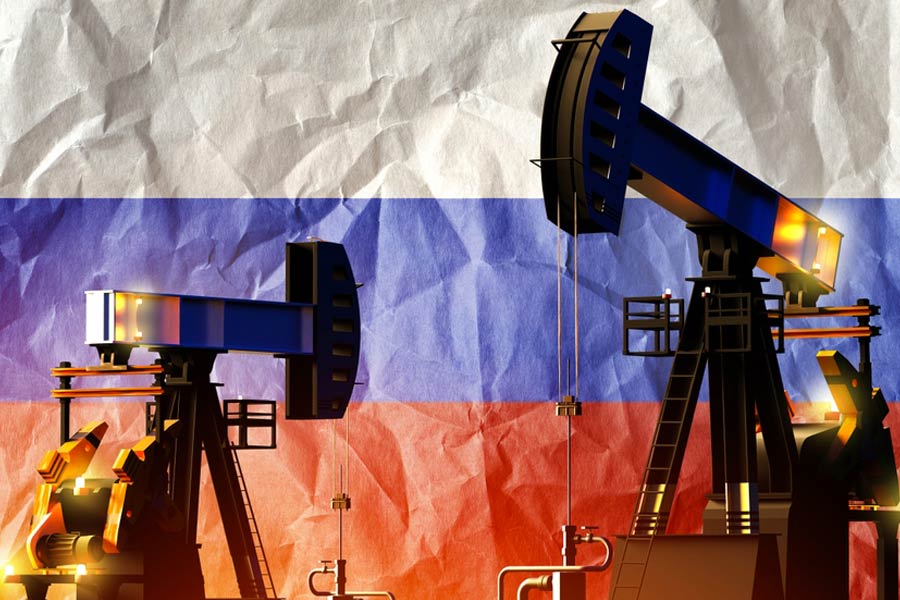India is continuing its record-breaking run having bought more discounted Russian crude than ever before for the 11th straight month. With India’s state-run refiners now in the market, purchases of Kremlin crude could power even higher in the months ahead.
One huge change in the marketplace is that for the second straight month, public sector giant Indian Oil Corporation (IOC) has got into the act and muscled its way past Reliance as the country’s biggest buyer of discounted Russian oil. Bharat Petroleum (BP), too, is leaping into the Russian market and is reported to be in advanced talks with Rosneft to buy crude from it.
In June, India will buy 2.3 million barrels of Russian crude per day which means that almost 50 per cent of our imported crude oil is now arriving after a long tanker voyage from Russia. “It’s amazing that India is buying at these levels because the summer months – June-July – are the lowest in terms of overall demand due to the monsoon. But it seems the price is so good, they are just keeping on buying,” says Viktor Katona, lead crude analyst at data analytics firm Kpler.
India’s public sector giants were slow into the game of buying Russian oil but last month IOC snapped up 675kbd (that’s 675,000 barrels per day, which put it far ahead of Reliance which bought 445kbd (445,000).
Bharat Petroleum (BP), too, is leaping into the Russian market and is reported to be in advanced talks with Rosneft to buy crude from it.
India bought 2.15 million barrels of Russian crude per day in May and 1.9 million barrels in April. Last year, oil industry analysts were taken aback when India’s crude purchases from Russia crossed the million mark.
In May, too, IOC powered ahead buying 738kbd (that’s 738,000 barrels per day) which put it far ahead of Reliance which filled its tanks with 525kbd during the month. During May and June almost one tanker a day was arriving in ports like Paradip and Chennai for IOC refineries.
The country has kept up its ever-rising buying from Russia even though the monsoon rains have arrived when fuel consumption usually drops marginally. Refineries generally use this period to shut down for maintenance.
However, the bargain-basement prices India’s getting from the Russian oil giants are dropping slightly. India was buying Russian crude through most of last year at a discount of around $10-$12 per barrel to Brent quotes. Now, BP is reportedly negotiating for $8 less than the prices quoted in Dubai. Brent and Dubai crude are two benchmarks for global prices. Even that is enough for savings in millions on every tanker that arrives here.
In the last year India and China, the world’s two largest oil consumers have between them reshaped the entire global market for crude.India has cut back its buying sharply from its usual suppliers Iraq and Saudi Arabia. Says Katona: “Paradip (for IOC) didn’t get a single tanker from Saudi Arabia in June which is the first time in two years that this has happened.” Another oil industry analyst says: “Saudi Arabia and Iraq have – to a small extent – been pushed out of the Indian market.”
But China is absorbing a large amount of the crude that would, till last year, have been sailing towards India. In addition, the Chinese are buying a large amount of Iranian oil which faces sanctions in Europe, the US and other parts of the world. Even India is not buying Iranian crude because our banks and oil companies fear they might face sanctions in the US.
“For many of these (suppliers), China has been the safety valve – a country they can send their incremental volumes to if they want a new partner,” Katona said.
The Iranians have tripled production compared to production amounts in 2019-20. That may be one strong reason why oil prices haven’t climbed steeply in the last 16 months since the Russia-Ukraine war broke out. Russian oil is also reaching global destinations – possibly via India.
The fact that oil is plentiful in global markets may be one reason why Saudi Arabia is cutting production by a million barrels a day. Also, India looking in other directions may have affected them.
“If I were Saudi Arabia, I would have difficulty finding new markets for the crude because the two biggest markets in Asia are pretty much taken,” Katona said.










